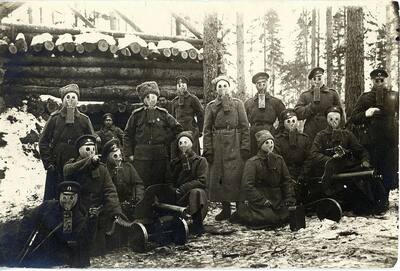Chemical weapons at the bottom of the Baltic Sea
03.01.2023
An important and frightening part of the "legacy" of the First and Second World Wars - CHEMICAL WEAPONS - has been sunk to the bottom of the Baltic Sea. You could call it a kind of time bomb. Below are just a few facts described in scientific publications.
1. Chemical weapons were often used during World War I and their development and stockpiling continued before and during World War II.
2. Dumping of chemical weapons containing nerve gas (initially – on a small scale) was started by the German army around 1944 in the vicinity of the Little Belt (one of the Danish straits) in order to prevent them from falling into the hands of the enemy. Until the 40th in the middle, there are few documents that could be used to judge the places where it happened and the quantities and contents of the dumped weapons.
3. After the Second World War, about 50,000 tons (!, figures differ in different sources) of chemical weapons were dumped in the deepest parts of the Baltic Sea near Bornholm, Gotland and Gdańsk. It is estimated that the German weapons arsenal contained a total of around 65,000 tons of active chemicals. There is information that in the Skagerrak (actually – the entrance to the Baltic Sea) on German cargo ships during 1945. – 1948 sank about 270,000 (!) tons of chemical weapons containing mustard gas, phosgene, etc. poisonous compounds.
4. In most cases, chemical weapons were thrown overboard, or in containers, wooden boxes (!), or by sinking ships. The exact amount of chemical weapons dumped and all the locations are still unknown, as it often happened “illegally”, if that could describe the process.
5. More than 70% of the chemical weapons dumped in the vicinity of Bornholm and Gotland had a thin metal casing, which is still exposed to seawater corrosion processes.
6. The last fixed – the official dumping of chemical weapons took place in 1948. and was carried out by the Navy of the then German Democratic Republic and the Soviet Navy. There are unverified reports that the secret dumping of chemical weapons in the Baltic Sea continued until the 20th century. the eighties.
7. The most spilled into the sea was mustard gas (named after the WW1 battle of Ypres in Belgium), also known as mustard gas – around 7027 tons (off Bornholm) and 608 tons off Gotland. Along with them, chemical weapons containing arsenic, tear gas and hydrogen cyanide were dumped.
8. It has been proven that chemical pollution causes metal corrosion, etc. has already entered the environment for some reason. Currently, only a short distance around chemical weapons disposal sites. Its distribution depends on the topography of the seabed, currents, etc. factors.
9. According to the performed simulations and modeling, there is a possibility that chemical pollution could reach the shores of Germany and Poland after a larger spill in about a month.
10. The practice of dumping chemical weapons has also been carried out in other seas and oceans of the world and by various countries. Currently, among the potentially first endangered are fishermen (incidents where there was contact with poisonous substances were frequent in the 1970s & 1980s up to the 1990s), whose nets have already received chemical weapons or their parts, or those who which is engaged in construction work at sea.
Sources used:
Historical photo: the machine gun team of the 5th Zemgale Latvian regiment during gas attack training in 1916. in December. Source: Latvian War Museum
1. Exposure status of sea-dumped chemical warfare agents in the Baltic Sea
2. Chemical Weapons dumped in the Baltic Sea: Facts, tendency and prediction of level and scales of possible Ecological disaster
3. Sea – Dumped Chemical Munitions
based on Google map) with sunken chemical weapons


